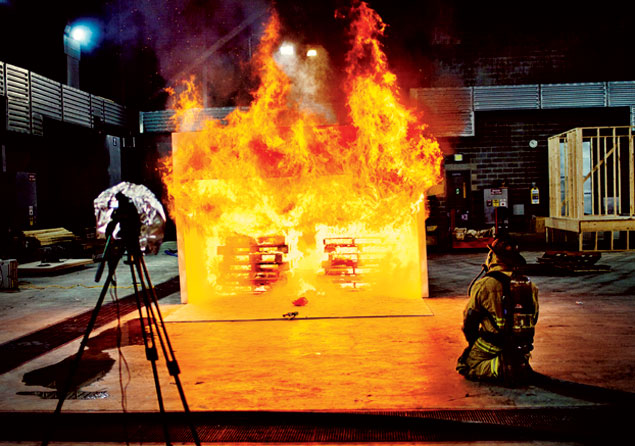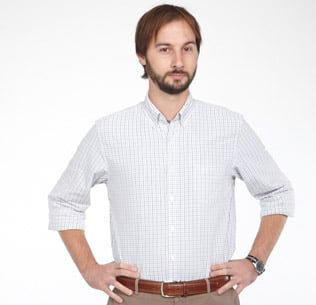Late at night on February 14, 2012—Valentine’s Day—a fire broke
out at the Comayagua Farm Prison in central Honduras. For 40 minutes, the
flames consumed ten barracks designed to house about 50 inmates each. On
the night of the fire, close to twice that many prisoners were locked in
the cells. By morning, 361 were dead.
The next day, a Honduran newspaper reported that an inmate had
called the Comayaguan governor that night, threatening to burn the place
down. Others accused prison guards of starting the fire. In a dilapidated
and overcrowded prison, in the country with the world’s highest murder
rate, neither scenario seemed far-fetched.
The Honduran government asked the United States for help with
the investigation, and the Bureau of Alcohol, Tobacco, Firearms and
Explosives—known as ATF—assigned its International Response Team to the
scene.
When John Allen, a member of that team, arrived at the prison,
he saw hundreds of people standing outside the gates. They were family
members of the dead, town residents, and witnesses to the
devastation.
Allen watched the crowd part as a Humvee full of armed
guards—ATF’s protection—led them through the gates. Deep scorches climbed
the barracks’ walls. Soot, ash, and burned metal littered the ground, each
piece of debris stained black. Allen stepped under the yellow police tape
and walked into a tent for a briefing.
The Comayaguan chief of police spoke first. Through an
interpreter, he described his version of events—where the fire had started
and how it had spread. Then the local fire marshal said his piece. The
stories didn’t match.
“This was four days after the fire, and they couldn’t agree on
anything,” says Allen. “It was very apparent right then why we were
there.”
Allen had seen this kind of thing before. Bad science has
plagued arson investigations, both in the US and abroad: Anecdotal
evidence, faulty assumptions, and outright myths have distorted the
reality of how fires burn and the supposed telltale signs of an
intentional blaze.
Allen is chief of ATF’s Fire Research Laboratory in Beltsville,
which arms investigators with the latest tools for uncovering the truth
behind each inferno. It’s the world’s largest fire-science laboratory, and
since 2003 it has done pioneering research by recreating large-scale burns
in its vast test chamber.
With conflicting stories and rumors to sort through, Allen
would need that scientific arsenal to find out what really happened in
Honduras.
“So,” he says, “we got to work.”
• • •
At a typical crime scene, the presence of a dead body, drugs,
or stolen goods leaves no doubt that wrongdoing has taken place. But when
Allen approaches a burned-down building, it isn’t immediately clear
whether what happened was an accident or a crime. The very nature of fire
is to obscure, to eliminate evidence, motives, and meanings. Yet if you
look closely enough, a story is written in the ashes of each
scene.
Until recently, fire investigation was largely the arena of
myths and old wives’ tales.
“They called it the art of fire investigation instead of the
science of fire investigation,” says Allen, who began his career as an
electrical engineer in regulatory compliance, testing products for fire
shock and safety. He says arson investigators were usually firefighters
who’d been promoted up the ladder without any scientific training. They
relied on what their predecessors had taught them.
Investigators were taught to look for evidence such as “crazed
glass,” a spider-web pattern of small cracks in a window that was said to
indicate a rapid rise in temperature, which only accelerants like kerosene
or gasoline could produce. But experiments since then have proven that
crazed glass is actually caused by the rapid cooling of a window—or more
simply, the blast from a firefighter’s hose.
One fire in 1990 would become a seminal moment in the field of
arson investigation. After a fire tore through his two-story home in
Jacksonville, Florida, Gerald Wayne Lewis was charged with setting the
blaze and murdering his wife and five other family members.
The signs were all there: “alligatoring,” large blisters on the
wooden floorboards that could appear only in a fast-burning,
accelerant-fueled fire; burn marks on the floor known as “pour patterns,”
the black signature of what was once a puddle of gasoline. Lewis claimed
the fire was started by his three-year-old son, who was playing with
matches near the couch, but next to the door, a V-shaped burn—an indicator
of where the fire began—told investigators a different story.
Lewis’s wife had taken out a restraining order against him, and
their divorce hearing was scheduled for three days from the night of the
fire. Police learned that he had threatened to burn the house down before.
They told Lewis they intended to seek the death penalty.
Before they did, prosecutors brought on two fire experts—John
Lentini, a fire investigator in Georgia, and John DeHaan, a
fire-investigation-textbook author—to bolster their case. When DeHaan saw
that there was a condemned, nearly identical house next to Lewis’s, they
decided to recreate the fire to prove that the suspect’s version of events
couldn’t be true.
They brought in furnishings identical to the ones that were in
Lewis’s home, including a living-room couch just like the one where he
claimed the blaze had started. Without using any accelerants, Lentini and
DeHaan lit the couch, expecting the fire to take as long as 20 minutes to
consume the room. Instead, it took four.
When the fire was extinguished, investigators once again saw
all the supposed signs of an arson case. But no accelerant that would have
caused the alligator blisters had been used, no gasoline where the pour
patterns appeared, and no V shape by the couch, where they started the
fire.
All charges against Gerald Wayne Lewis were
dropped.
Lentini went on to become a renowned fire expert who has
testified in hundreds of trials. He says that case changed his
outlook.
“I became persuaded that the track record for arson
investigation was so miserable that I believe every fire should be first
approached as an accident,” he says. “[Innocent] people end up with their
insurance claims denied or in jail with their lives ruined.”
Of the Lewis case, Lentini says: “I was ready to help the
prosecution send him to Old Sparky until that test.”
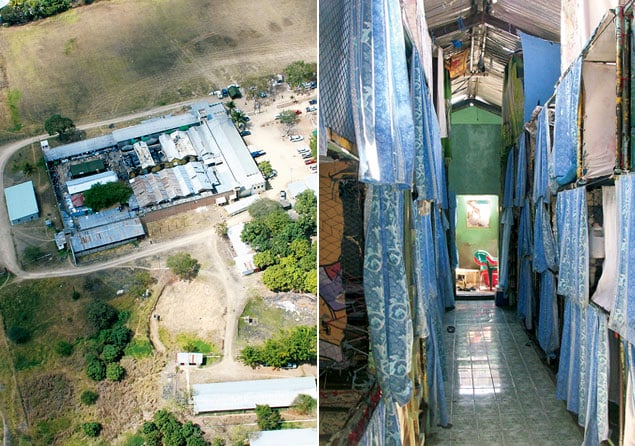
In 2010, there were 362,100 residential fires in the US,
resulting in 2,555 deaths. According to the US Fire Administration, part
of the Federal Emergency Management Agency, approximately 16,000 of them
were intentionally set.
John Allen and his team at the Fire Research Lab separate the
accidents from the arson cases by following the precedent Lentini set in
the Lewis case: replicating the scene of the fire, then burning it
down.
Welcome to the Fire Research Lab’s test-burn chamber: a vast
hangar made of cement and steel with pocks of ash from whatever was burned
down yesterday.
Scientists here can reproduce a fire scene in detail—the same
couches, drapes, rug—and watch how it burns. Overhead, a 3,600-square-foot
hood connected to an exhaust system sucks up the smoke for analysis as
data systems measure such things as heat-release rates, flame velocity,
and heat flux. They do this two, three, four times, testing different
scenarios. Could the room’s space heater have caused the fire? Maybe a
cigarette? Allen will get that same space heater, get that cigarette, and
find out. He buys some things on eBay, but once he even drove to Missouri
to get a certain model of trailer to burn.
The lab’s staffers have been known to gather in the viewing
rooms for some of the more exotic burns, such as multistory buildings or,
once, a few Corvettes.
There isn’t as large a crowd on the day I visit, but several
people assure me they plan on getting quite a fire going.
This is how a test burn happens in the Fire Research
Lab:
People buzz around the burn chamber, some dressed in suits,
some in ATF T-shirts, a few in full firefighter gear. They’re typing on
keyboards, attaching wires, and sliding shallow bowls of an accelerant
called heptane under a stack of wooden boards.
Today they’re experimenting with a new type of drywall that
manufacturers have begun using in homes. It’s lighter, meaning heat might
move faster across it. The lab staffers built a large shed made mostly
from it. They’re going to torch the shed and see what happens.
A lab technician reads safety instructions over a bullhorn, the
words echoing through the enormous room. It’s cold in here, but that will
change soon.
The men in firefighter gear use a long rod to ignite one of the
five pans of heptane under the stack of boards in the shed, and at this
point I realize that instead of watching this inferno from behind panes of
thick glass, I’ll be right in front of it, in the same room.
“How close can I get?” I ask Allen.
“As close as you want,” he says with a smirk. “You’ll know when
you’re too close.”
Allen places a stuffed animal a few yards from the shed. He
says this will show how easily a fire can spread through heat alone. The
stuffed animal won’t touch the larger fire, but by the end of the
demonstration it will be ash.
• • •
The fire starts slowly, triangular tendrils of orange flame
curling upward. The stuffed animal is probably nice and warm. A few
flare-ups catch the wooden boards inside the shed, but the fire dims after
a few seconds and begins to sputter. The technicians decide it could use a
little boost and light three extra heptane pans.
The flames roar back to life. The stuffed animal starts smoking
as if by witchcraft. The fire grows, becomes shapeless—a wall of radiant
orange and impenetrable black. It curls over the top of the shed as if it
means to claw the whole thing down. The stuffed animal begins coiling into
itself, deflating like a balloon.
The heat pushes me back. It’s heavy, a searing weight—I
understand what Allen meant about standing too close.
I’m about to witness the point of no return:
flashover.
Flashover is a phenomenon that has many complex mathematical
definitions, but at its simplest, it happens when a fire in a room becomes
a room on fire.
The stuffed animal combusts. Black smoke billows from the shed,
like a dark tornado at first; then it gets wider and becomes a hurricane,
then wider still until it envelops the room. It’s nighttime in here,
snowing ash and embers, when the firefighters turn on the
hoses.
The structure is a smoking carcass now, standing limp and
filled with black holes. The stuffed animal has evaporated, as if it had
never been there.
Allen and the technicians are looking over charts and graphs on
computer screens that somehow withstood the heat. Allen points to the
highest spike on a line graph.
“This one got to 1,000 degrees,” he says.
I repeat the figure to him in awe: “One thousand degrees
Fahrenheit.”
He corrects me: “Celsius.” Which works out to almost double
what I originally thought.
Outside the test chamber, it’s clear that Allen got a kick out
of the spectacle. He’s a big, gregarious man with a booming voice. As we
leave the building, he hands me his business card, which features a fake
burned-off corner, and a Fire Research Lab-branded book of matches as a
souvenir.
“Don’t leave them at the crime scene,” he says with a bellowing
laugh. He doesn’t have much time to talk about what we just saw: “I have
to catch a plane to Honduras.”
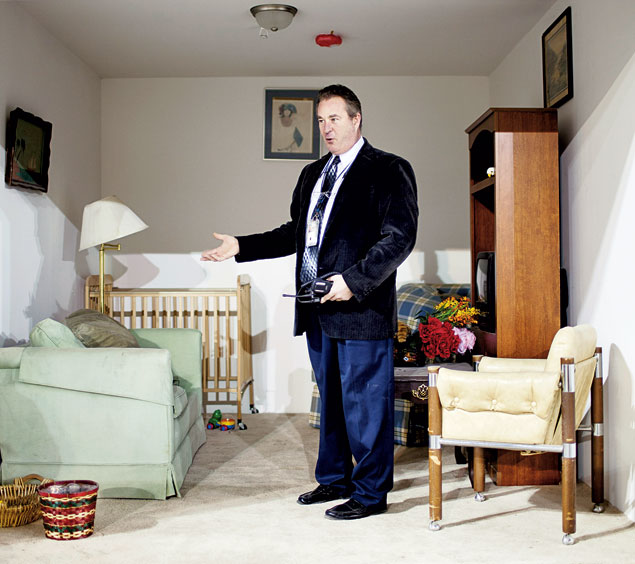
Each fire has a unique and complex set of variables—where it
started, what materials burned, where the oxygen came from. Even among the
hundreds of thousands of cases fire investigators handle each year, any
given fire may have no historical analog to study.
James Quintiere, professor emeritus in the University of
Maryland’s Department of Fire Protection Engineering, puts the complexity
of fire investigation this way: “It’s not rocket science. It’s more
complicated than that.”
Quintiere has been teaching at Maryland since 1990, and he
helped ATF plan the Fire Research Lab. Before that, he was chief of the
Fire Science and Engineering Division of the National Bureau of Standards,
now the National Institute of Standards and Technology. During his time
there, he saw the scientific and law-enforcement communities begin to
develop a better understanding of fire.
Howard W. Emmons, a Harvard professor and the so-called father
of modern fire science, did some of the field’s earliest research in the
1940s. He built fully furnished rooms in his laboratory, put a match to
them, and documented how combustible materials interact and feed a fire.
Soon he was torching entire buildings, attempting for the first time to
create a mathematical model of how a fire will burn in a given
scenario.
Quintiere was on the scene for one of the first applications of
hard science in a suspected arson investigation. It was New Year’s Eve
1986 at the Dupont Plaza Hotel and Casino in San Juan, Puerto Rico. The
casino was scheduled to close early that night, so revelers were packed
inside for last-minute gambling in the late afternoon.
At 3:30 pm, a fire started in the south ballroom near a stack
of unused furniture. Some smoke drifted into the casino, but the gamblers
didn’t evacuate. Then—flashover.
Flames tore out of the ballroom, filling the foyer with black
smoke as hot as 600 degrees Fahrenheit. Soon the gases burst through a
glass wall abutting the casino. Hundreds of people attempted to flood out
of the only available exit: a pair of inward-facing doors. There were no
sprinklers, escape plan, or even a working fire alarm. It burned for five
hours and claimed 98 lives.
By the next morning, ATF and FBI agents were on the scene
interviewing more than 400 witnesses.
The US Fire Administration invited Quintiere and another
scientist, Harold Nelson, to the site. The agency saw promise in a
collaboration between scientists and law-enforcement agents. When
Quintiere stepped off the plane in Puerto Rico a few days after the fire,
he had never been to an actual fire scene before.
The relationship was rocky at first—ATF initially barred
Quintiere and Nelson from the scene. When the scientists were finally
allowed to sift through the wreckage, they calculated the fire’s rate of
growth by measuring the rooms and figuring out what materials had burned
in each one. In this way, they established a timeline of the fire so they
could trace it back to its source.
At the end of each day, the scientists sat down with ATF agents
to discuss their findings. When witness statements corroborated the
scientists’ timeline, investigators knew they were close to the
truth.
The team tracked the fire’s source to cans of cooking fuel
placed in the south ballroom. The first arrest came on January 13—a hotel
employee whose union was embroiled in a labor dispute with the owners. Two
more were arrested days later and charged with arson. All three pleaded
guilty that April.
After Quintiere joined the University of Maryland in 1990, he
started training ATF agents. Throughout the ’90s, he taught them the
formulas that had helped solve the Puerto Rico case, but he soon realized
the limitations of mathematical modeling.
“You can make a calculation and have some degree of
plausibility,” he says, “but if you’re going to convince a jury, you have
to demonstrate it.” Quintiere could create small test burns in his
classroom, but he was thinking bigger.
He told ATF: “You guys need a lab.”
• • •
The Fire Research Lab is just one part of ATF’s National
Laboratory Center in Beltsville. There’s a fingerprint examination center,
where the remains of bomb parts and guns are dusted for prints. The
Questioned Document Examination section inspects handwriting and
signatures on legal documents. And in the quarantined Fire Debris Analysis
rooms, dozens of large silver canisters contain materials collected from
fire scenes. Each has a small piece of charcoal hanging inside that
absorbs fumes from any accelerants on the debris to give investigators one
more piece of the soot-stained puzzle that is a fire scene.
Allen walks through a theoretical investigation. ATF is called
onto the scene only if a district requests help or if the location is
under federal jurisdiction—which can mean a lot of places, such as a
7-Eleven that gets its wares shipped in from out of state, making the fire
the focus of an interstate-commerce case.
Investigators start in the areas with the least damage and work
their way to those with the worst, trying to determine the origin and
cause of the fire. There are red flags that signal possible arson—for
instance, two burned couches on opposites sides of the room but no burning
in between. Could the flames from the first couch have gotten hot enough
to ignite the second, or did a puddle of gasoline play a role?
Dogs are brought in to sniff out accelerants on and around each
couch. Back at the lab, forensic chemists analyze any debris the dogs flag
using the charcoal-absorption method.
Meanwhile, investigators look into the backgrounds of everyone
connected to the fire. Suppose those two couches were in the office of
someone’s business. How was that business doing? Uncovering that is the
job of ATF’s forensic-auditing team.
“We’re going to pull everything,” says Franco Frande, chief of
ATF’s Financial Investigative Services Division. “We’re reconstructing the
financial condition of the business. So we’re going to pull your banking
information to see what your cash flow is, looking for revenues that are
falling off. Are you paying your creditors? Are you paying your employees
on time or bouncing their checks? Do you rent? Is your lease too
expensive?”
Financially motivated arson was widespread during the
recessions of the 1970s and ’80s, but the most recent downturn hasn’t
caused as big an uptick. Frande says financial tools such as bankruptcy
protection and short sales are better known today and help people get out
of bad business decisions legitimately. But intentionally set fires are
still a problem. Last year, 267 of ATF’s 1,856 fire investigations fell
into the “arson for profit” category.
While auditors are gathering evidence, fire scientists set up a
computer model of the room with two couches and set a digital fire. But to
convince the jury, you need the real thing—recreated in the test-burn
chamber.
“We had a witness once claiming he saw a fire blow out the
windows of a house when he was standing at a certain place at a certain
time,” Allen says. “But when we actually went back and reconstructed that
portion of the fire, we figured out he would not even have been able to
survive if he was actually standing where he said he was
standing.”
One myth ATF and others have put to rest is the action-movie
cliché of using a cigarette to ignite a puddle of gasoline. Allen’s lab
has produced reports showing why that’s impossible.
“Somebody poured gasoline on his girlfriend and claimed, ‘Oh, I
wasn’t really going to do it—my cigarette just fell out of my mouth and
accidentally ignited her,’ ” says Allen. “Well, we’ve taken cigarettes and
dummies and doused them in gasoline and done everything we can to try to
get it to ignite, and it doesn’t happen. Nope, he had to flick his Bic on
her.”
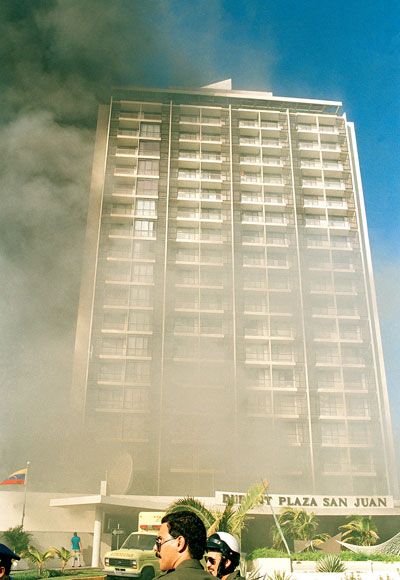
Thomas Sweatt loved fire. Loved watching buildings burn and the
screaming victims run out of them. He was a mild-mannered
fast-food-restaurant employee by day, but he had a dark side. Over the
course of two decades, he would set enough fires in the Washington area to
become arguably the most prolific serial arsonist in US
history.
He started as early as 1985, torching vacant buildings and
carryout joints in the District’s Anacostia. In 2001, he expand-ed his
turf, incinerating homes along the border of Northeast DC and Prince
George’s County. Years later, he would disclose his motives in letters to
the Washington City Paper—some fires were born of powerlessness
and envy over the pretty houses and nice cars he saw on his way home from
work. Others were part of a sexual fantasy for Sweatt, who enjoyed
watching helpless occupants struggle to escape.
In 2003, DC and Prince George’s fire officials began comparing
notes on a series of nighttime fires in their jurisdictions. There were
similarities: fires set between 1 and 5 am, usually at the doorway or
porch of a single-family home. They concluded they were dealing with the
same man.
Local fire officials brought in ATF to help with the
investigation. Tom Daley, a certified fire investigator for the bureau,
was part of the cross-jurisdictional manhunt.
“We tried everything,” says Daley. “DNA, fingerprints, trace
evidence, interviews, psychological profiles, geographical profiles.
Everything you’ve seen on CSI, every idea, every
lead.”
Daley was able to track the source of each fire to the remains
of a one-gallon plastic jug. The arsonist’s method was to fill a jug with
gasoline, stuff a wick made out of a piece of clothing in the top, and
light it.
And as any fire investigator will tell you, it’s not the
gasoline itself that burns—it’s the vapors. The gasoline actually acts as
a coolant, which means that in each fire a small portion of the bottom of
the jug survived. Daley recovered these pieces and sent them to Ray Kuk, a
forensic chemist at the newly opened Fire Research Lab. Kuk and his team
were able to identify details about the device, such as the type of wick
and accelerant, and they reverse-engineered their own.
Once the team figured out what Sweatt was using to start the
fires, they began experimenting. Kuk built a mock wall and lit fires,
filling jugs with different amounts of gasoline to establish a timeline
that would reveal how long the arsonist needed to make his
escape.
DNA samples were recovered from two gasoline jugs the arsonist
had used, and investigators traced a shopping bag left at another scene to
a local convenience store. When a pair of gas-soaked Marine Corps pants
turned up near an Arlington fire, they were tested for DNA. It matched the
arsonist’s.
The pants led investigators to the Naval Criminal Investigative
Service, which had been looking into car fires around the Marine Barracks
at Eighth and I streets in Southeast DC. NCIS had video of a car leaving
one of the scenes, with a tag number they traced to a man who lived around
the corner from the store that the recovered shopping bag came from. After
a few days of stakeouts, ATF agents confronted Thomas Sweatt and asked for
a saliva sample. He complied.
Sweatt was arrested on April 27, 2005, and charged with two
deaths. As many as 45 fires were pegged to him when he pleaded guilty and
was sentenced to life in prison. Since then, the number of fires he
started in Washington has been estimated to be as high as 350.
It’s a little eerie standing in a building you know will soon
be ash. Especially when everyone around you is talking about how best to
burn it down.
Back in the Fire Research Lab’s test-burn chamber, ATF fire
investigators are having a competition. Four teams have built a
16-by-10-foot structure, furnished it with three upholstered chairs, some
carpeting, and a wicker hamper, and will soon put a match to all of it. The
goal: to get the biggest fire going the fastest.
The competition is the capstone project of a weeklong
recertification program that all of the 100 or so ATF-certified fire
investigators across the country must undergo annually.
The theme this year is how ventilation affects a fire. New
research has shown that the most intense charring in a fire scene may not
occur in the part of the room where the fire started, as previously
thought. Scientists are studying whether deep charring is more likely the
result of an oxygen source, such as an open window or door.
The competition will show investigators how variables in
ventilation can change a fire. Using all they’ve learned in the past week,
the teams will arrange the windows and doors of their structures in a way
they think will garner the highest heat flux.
John Golder, who oversees the training program, is leading the
exercise. The teams make their final adjustments: arranging furniture,
hammering pieces of plywood, even nailing carpeting to the ceiling to
hasten the blaze (the rules allow for some creativity). One team has
attached an awning to the outside of its doorway, thinking it will contain
the fire better and disperse less heat.
Golder says it takes a special type of person to be a fire
investigator: “Most enjoy the complexity, they enjoy putting puzzles
together. It’s creating order out of chaos.”
Another set of safety instructions is recited from a bullhorn,
and with that they’re off. The first structure starts leaking smoke
slowly, and as it morphs from white to gray to black, a flash illuminates
the plywood and flames pour out.
Team two starts. A small video camera sits in each structure,
and agents crowd around computers to watch the live feed from inside. You
can see how it all starts: A flicker from a matchstick sparks a fire that
consumes the furniture and carpeting and paneling around it, growing into
an inferno. As flames climb to the ceiling, team two takes the
lead.
The third team watches a tornado of smoke engulf its camera
before the heat finally puts it out of commission. There are cheers and
high-fives. Team four isn’t as ecstatic, and when the results are
finalized, team three comes out on top.
“We can control the fire,” a team-three member says. “We can
tell it what to do.”
• • •
In Honduras, the prison fire quickly became political. It
turned out that the phone call to the governor—the one from the inmate
threatening to burn the place down—never happened.
The governor “just wanted to get her face in the paper,” says
Allen. There were also rumors that a guard had thrown a Molotov cocktail
to start the blaze.
Meanwhile, the police chief and fire marshal couldn’t agree on
how to approach the investigation. The chief wanted to follow up on the
village hearsay, the talk of Molotov cocktails and explosives.
The fire marshal was talking science—fire dynamics, heat flux,
burn patterns. Allen was intrigued by how much he knew, but then he
realized why: “The guy had taken one of our classes.” He’d had ATF
training.
Allen worked his way from areas of lesser damage to those with
greater damage, ruling out barracks where the fire couldn’t have
originated. Meanwhile, ATF agents interviewed witnesses. Each side of the
investigation led to the same source: module six.
Module six had no spread pattern consistent with an
instantaneous fire from an explosive. No glass fragments from a Molotov
cocktail, no remains from plastic jugs that would have contained an
accelerant, as in the Sweatt case. Electrical problems were also
dismissed.
Prisoners at Comayagua were allowed to hang blankets and thin
sheets around their bunks for privacy. The beds themselves were made of
polyurethane cushions wrapped in cloth. The ATF team tested them and found
that they were extremely combustible.
The team deduced from burn patterns that the fire had started
high, in a top bunk, fed by an inmate’s bed draping. Specifically, the top
two bunks along the western wall, column four. Witness statements
corroborated this.
An excavation of the area again revealed no electrical problems
and no glass fragments from a Molotov cocktail. Flammable liquid was
considered, but the team knew that accelerants would normally be poured on
the floor, not on a top bunk. And an accelerant would have resulted in an
almost immediate large fire, not the slow burn the evidence was
showing.
After all the rumors, the finger-pointing, the back-and-forth,
the truth lay in a tiny flame, a cigarette or pipe that had been left lit
just a little too long. There were no fights or arguments in module six
that night, nobody seeking revenge. Three hundred sixty-one people died,
and it was an accident.
To Allen, the truth isn’t subjective, it’s not gray: The truth
is what the formulas decipher, what the test burns reveal, what the
chemists identify.
It’s a never-ending process: New building materials are
introduced, new construction designs, new research—things that must be
tested and understood and applied to a chaotic crater of ash and debris,
the truth hidden underneath.
Says Allen: “We will never stop learning.”
This article appears in the November 2012 issue of The Washingtonian.

